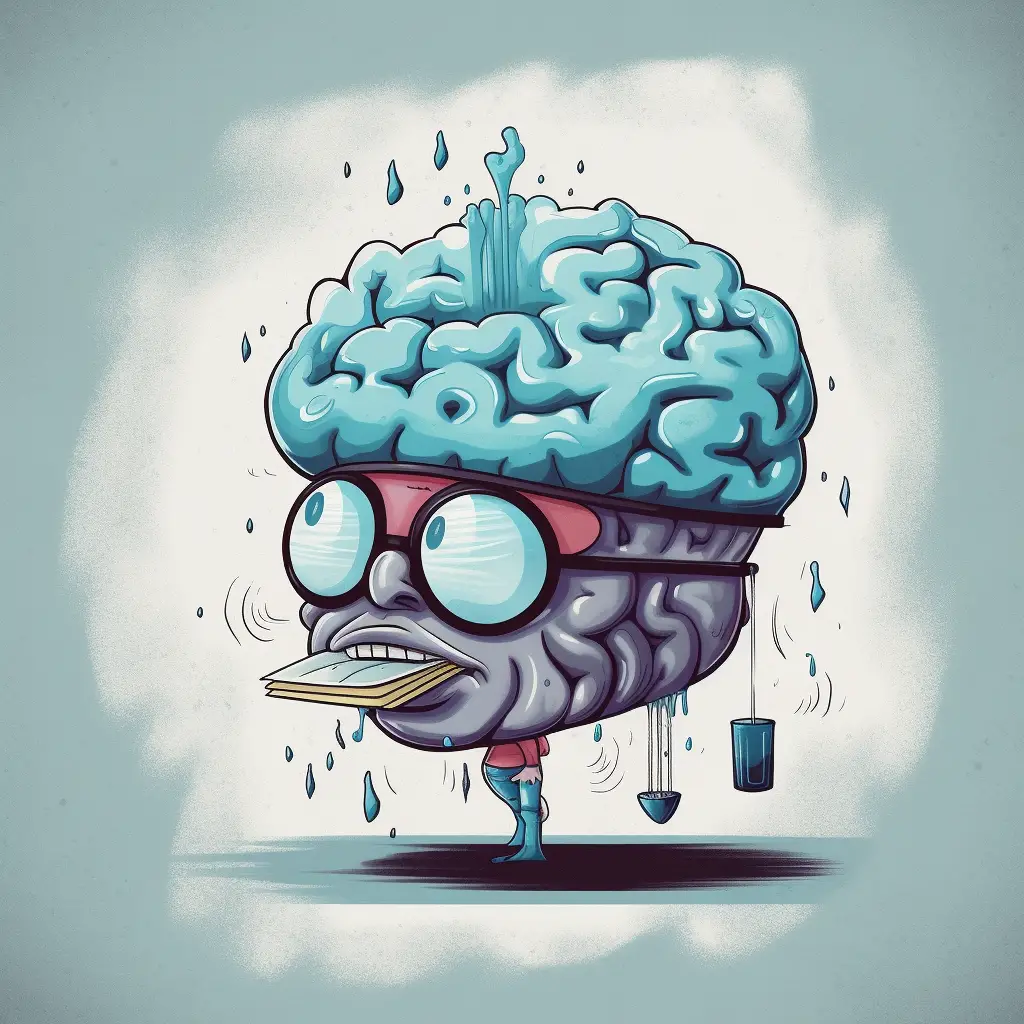
The availability heuristic, also called the availability bias, is when our cognitive processes rely on the most easily retrievable information, potentially leading to distorted perceptions and flawed decision-making.
Imagine you’re watching the news, and there’s a report about a recent shark attack on a beach. The next day, you head to the beach, and even though the water is inviting, you can’t help but hesitate before taking a dip. You suddenly find yourself fixated on the idea of a shark lurking beneath the surface. Why? That, my friends, is the power of the availability bias heuristic at play.
In this article, we’ll dive deep into the concept of availability bias. By understanding how our minds work in decision-making, we can begin to recognize and mitigate the effects of these biases in our daily lives.
What are Heuristics?
Heuristics are the secret sauce of our brain’s decision-making process. They’re mental shortcuts that help us navigate the complexities of life with relative ease. But, as with all good things, there’s a catch.
While these shortcuts can be incredibly helpful, they can also lead to errors and biased judgments. The reason? Our brains simplify complex information to save cognitive effort, and in doing so, they might overlook crucial details.
To illustrate, let’s consider a few examples:
- The Rule of Thumb: When trying to estimate something, we often rely on general guidelines or “rules of thumb” that are easy to remember. For instance, when tipping at a restaurant, many people follow the 15-20% rule. While it’s a helpful starting point, it may not always lead to the most accurate or fair tip based on the specific service received.
- Stereotyping: When meeting new people, our brains tend to categorize them based on readily available information, such as appearance or first impressions. This mental shortcut can lead to the formation of stereotypes, which may not accurately represent an individual’s true character or abilities.
Now that we’ve laid the foundation, it’s time to focus on a specific heuristic that often influences our thinking: the availability bias heuristic. Let’s dive deeper into this captivating cognitive phenomenon and see how it impacts our daily lives.
What is Availability Bias?
Availability bias, a sneaky cognitive phenomenon, plays a significant role in how we perceive and evaluate the world around us. It’s a mental shortcut where we base our judgments and decisions on the information that’s most easily accessible or readily available in our minds. Sounds harmless, right? Well, not quite.
The problem arises when the information that comes to mind most easily isn’t necessarily the most accurate or representative. This can lead to biased and skewed perceptions, as we rely on vivid or recent memories, rather than a complete and balanced assessment.
For instance, after hearing about a high-profile plane crash, you might suddenly feel that flying is incredibly dangerous. The tragic event is fresh in your memory, making it seem like a more significant risk than it actually is, given the overall safety statistics of air travel.
Now that we’ve got a handle on what availability bias is, let’s explore some real-life examples to see how it affects our decision-making and judgments.
Examples of the Availability Bias
Availability bias can show up in various aspects of our daily lives, subtly influencing our decisions and judgments. Here are some powerful examples to illustrate how it works:
Daily Life and Availability Bias
- Lottery Fever: When you hear about someone winning the lottery, you might feel compelled to buy a ticket, believing that you, too, have a decent shot at winning. The vivid stories of winners overshadow the fact that the odds of winning are astronomically low.
- Fear of Crime: If you’ve recently heard about several break-ins in your neighborhood, you might start to believe that crime rates are skyrocketing, even if the overall statistics haven’t changed. The proximity and recency of these events make them more accessible in your mind, leading to an exaggerated perception of risk.
- Fear of Flying: High-profile plane crashes often receive extensive media coverage, making them memorable and easily accessible in our minds. This can lead people to overestimate the dangers of air travel and develop a fear of flying, even though statistically, flying is much safer than driving a car.
- Food Scares: When a specific food product is linked to an outbreak of foodborne illness, the media coverage may cause people to avoid that product or its entire category for a significant period, even if the actual risk is low or confined to a specific batch. This can result in unnecessary food waste or dietary changes based on a single, isolated incident.
- Political Scandals: Extensive media coverage of political scandals or controversial actions can lead the public to believe that corruption or incompetence is pervasive in politics, even if such events represent a small fraction of political activities. This can lead to disillusionment, apathy, or distrust in political systems and the democratic process.
News, Media, and Bamboozling
- Shark Attacks: News outlets often cover shark attacks in great detail, emphasizing the gruesome and tragic aspects. As a result, people tend to overestimate the frequency and likelihood of shark attacks, despite them being exceedingly rare events compared to, say, car accidents.
- Viral Outbreaks: During a viral outbreak, constant media coverage can create the impression that the disease is more widespread and deadly than it actually is. This can lead to disproportionate fear and anxiety, as well as unnecessary precautions, even though the actual risk may be relatively low.
- Financial Market Swings: When the media highlights significant fluctuations in the stock market, people often believe that investing is much riskier than it actually is. This can lead to impulsive decisions, such as pulling money out of investments or avoiding investing altogether, even when a long-term strategy might be more beneficial.
- Celebrity Endorsements: When a well-known celebrity endorses a product, the endorsement’s prominence can create the illusion that the product is of higher quality or more effective than it actually is. This can lead people to make purchasing decisions based on the celebrity’s endorsement, rather than a thorough evaluation of the product itself.
- Natural Disasters: Coverage of natural disasters, such as earthquakes or hurricanes, tends to be extensive and emotionally charged. This can lead people to overestimate the likelihood of experiencing a similar disaster in their own lives, causing undue stress and potentially motivating costly and unnecessary precautions.
These examples demonstrate how availability bias can shape our perceptions and choices, sometimes leading to irrational or suboptimal decisions. To gain a better understanding of its consequences, let’s take a closer look at the potential negative impacts of this cognitive bias.
The Consequences of Availability Bias
While the availability bias may seem relatively harmless on the surface, it can have profound consequences on our decision-making and perceptions of the world. Let’s delve deeper into the darker side of this cognitive bias.
The availability bias can lead to inaccurate perceptions of reality by magnifying the importance of memorable events or readily available information. These skewed perceptions can manifest in various ways, such as:
- Overestimating Risks: When shocking events are fresh in our minds, we tend to overestimate their likelihood or significance. This can result in an inflated sense of danger or risk, potentially causing anxiety, stress, or suboptimal decision-making.
- Underestimating Opportunities: Conversely, the availability bias can also cause us to overlook potential opportunities. When we don’t have easy access to information about successful ventures or positive outcomes, we might underestimate their likelihood, missing out on chances to grow and thrive.
- Confirmation Bias: Availability bias can contribute to confirmation bias, where we selectively seek out and remember information that supports our existing beliefs. This can lead to a distorted view of the world, making it difficult to change our minds or consider alternative perspectives.
Availability Bias and Negative Impacts on Decision-Making
The availability bias doesn’t just warp our perceptions; it can also have tangible effects on our decision-making processes. Here are some ways in which this cognitive bias can negatively impact our choices:
- Poor Financial Decisions: As seen in the examples above, availability bias can lead to hasty or ill-informed financial choices. People may avoid investing, sell stocks impulsively, or make purchases based on celebrity endorsements rather than thorough research, ultimately affecting their long-term financial health.
- Irrational Fears and Avoidance: Overestimating the likelihood of adverse events can lead to irrational fears and avoidance behaviors. For example, someone might refuse to travel by plane due to an inflated perception of risk, despite flying being statistically safer than driving.
- Misallocation of Resources: Availability bias can influence decision-makers to misallocate resources, such as time, money, or effort, based on skewed perceptions of risk or opportunity. This can result in inefficient or unproductive outcomes, both at an individual and organizational level.
- Reduced Trust in Institutions: When availability bias leads to the belief that corruption or incompetence is rampant in certain sectors or institutions, trust in those entities may erode. This can undermine the effectiveness of these institutions and contribute to social unrest or disengagement from important processes, such as voting in elections.
The availability bias can have far-reaching consequences on our perceptions and decision-making, leading to negative outcomes in various aspects of our lives. However, by recognizing and understanding this cognitive bias, we can take steps to mitigate its effects and make more informed choices.
Overcoming Availability Bias
Fear not! While the availability bias can have a powerful influence on our lives, we can take steps to reduce its impact and make more informed decisions. Here’s how:
Awareness is Key
The first step in overcoming availability bias is simply being aware of its existence. By understanding that our brains have a tendency to rely on easily accessible information, we can take a step back and question whether our perceptions or decisions are truly accurate and representative of the situation at hand.
Seek Diverse Information & Challenge Yourself
- Expand Your Sources: Make a conscious effort to seek out diverse sources of information, particularly when making important decisions. This can help balance the information you’re exposed to, reducing the likelihood of availability bias skewing your judgment.
- Play Devil’s Advocate: Regularly challenge your own beliefs and assumptions by considering alternative perspectives or viewpoints. This can help you recognize when availability bias might be influencing your thoughts and promote a more balanced understanding of a given topic.
- Embrace Critical Thinking: Develop and practice critical thinking skills to evaluate the credibility and relevance of information. This will help you differentiate between fact and fiction and make more informed decisions based on a comprehensive understanding of the situation.
- Reflect on Your Decisions: Take the time to reflect on your decision-making processes, particularly when faced with significant choices. Ask yourself whether you’ve considered all relevant information, or if your judgments might be influenced by availability bias.
By following these strategies and actively working to overcome availability bias, you can become a more informed and effective decision-maker, ultimately leading to better outcomes in both your personal and professional life. Awareness and intentional action are the keys to unlocking a more rational, unbiased approach to decision-making.




